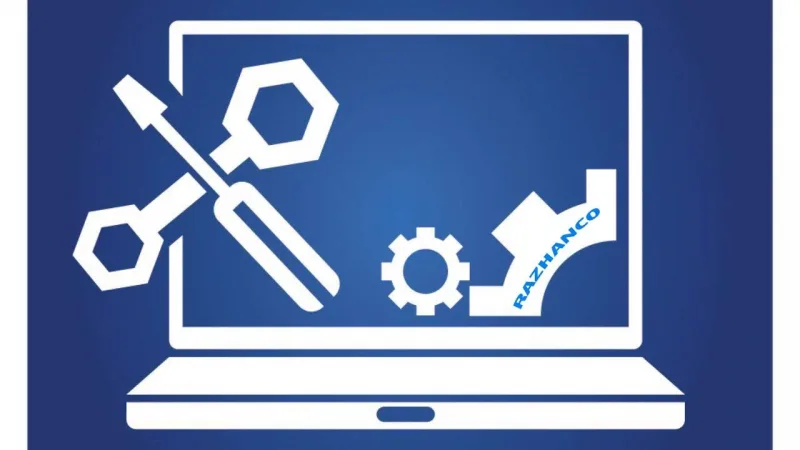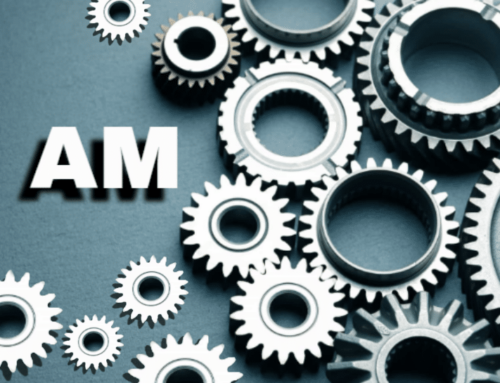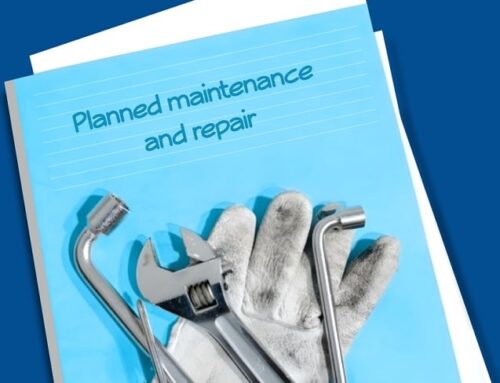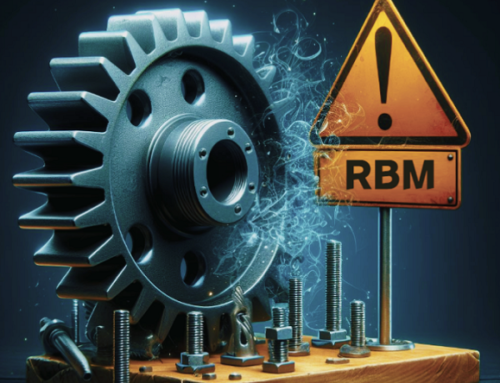When should you use preventive maintenance and repairs?
Questions related to the implementation of preventive maintenance and repairs should be answered as part of a broader discussion on the application of various maintenance and repair strategies. Therefore, before proceeding, we must set this discussion up by stating that it is not cost-effective to focus on one type of maintenance and repair solution.
Imagine that every organization has a wide range of assets. Some of them are vital for production, some of them are unimportant and others can be ignored. Different types of maintenance and repair solutions incur different implementation costs. There is no one type of maintenance solution that works as a one-size-fits-all solution.
We believe that the best method of maintenance and repairs includes a combination of different maintenance and repair solutions. For example:
You use emergency maintenance and repairs for low-priority or unrepairable assets, preventive maintenance and repairs for high-priority assets, and critical assets that are responsible for core business processes or repair and replacement. It is expensive, you use predictive maintenance.
Learn more about different maintenance and repair solutions…
-
What jobs are preventive maintenance and repairs used for?
Are these things familiar to you? If you have a business like this, be sure to read on as we talk more about how to implement a preventive maintenance program.
-
Requirements for implementing an effective preventive maintenance program
The amount of work that needs to be done to implementation of preventive maintenance and repairs depends on the size of your organization and the amount of your assets.
If the day-to-day work of your organization is routine and you are just looking for more order and order, it will be easy for you to accept preventive maintenance and repairs. On the other hand, if your organization is constantly taking devices out of unplanned downtime, this system will be more difficult to implement.
In both cases, there are two main requirements:
1. Purchase from relevant companies
In the future, in many of our articles, we will talk about the implementation of CMMS or maintenance and repair solutions. The bottom line is that if you want your preventive maintenance program to be successful, you better keep all parties involved in the project. The relevant groups are top management and maintenance technicians.
The condition for making major changes is to convince senior managers. In addition, although preventive maintenance and repairs are not expensive, this does not mean that they are free. You’ll want to secure the budget to implement CMMS software (if you don’t already have one) and allocate enough time to collect data, create a preventive maintenance calendar, and set up existing maintenance workflows. Even if it is in the best interest of the organization, it is sometimes difficult to convince the top management about the need for such a change. This is due to the harsh reality that more than 60% of decision makers consider maintenance and repairs as a cost center. With this in mind, your best argument is to focus on ROI and show how preventive maintenance can reduce costs and increase equipment productivity.
When it comes to maintenance and repair technicians, you want to impress them with the changes because ultimately the success of the program depends on them. They have to follow new procedures and use the proposed software solutions. If the maintenance team is unable to shift from reactive to proactive and follow new procedures, it is unlikely that the project will have significant benefits.
Discuss the changes you plan to make with the maintenance technicians. Explain what problem you solve and what your software does. Work with technicians when creating new workflows and selecting CMMS software. It is a proven principle that when people have a say in a process, they are more motivated to see it succeed.
2. Support the implementation of software maintenance and repairs
Implementation of preventive maintenance and repairs without any software support makes the process more difficult than it needs to be. It doesn’t take long to find out why. The simpler solution is to have a tool like a blackboard where you can enter unlimited maintenance and repair functions in the form of specific schedules and tasks and tasks will be announced to you at the desired time several months later.
Do you want to call the technicians whenever it’s time to do a PM, or let your mobile maintenance software send an automated email or SMS, which is more efficient?
Do you really want to spend time checking inventory or would you rather receive a notification if some spare parts are out of stock?
If you don’t have an overview of the amount of maintenance work, the status of assigned tasks and all the different metrics and KPIs, a CMMS gives you that.
Smart maintenance and repair management systems used to be a way to keep track of your maintenance plans, but they have since evolved into centralized digital platforms that manage all of your maintenance information. They are specifically designed for businesses that want to take a proactive approach to maintenance and repairs. Given the relatively low cost of implementing CMMS software, it’s hard to find a good excuse not to use it.
-
How to create a preventive maintenance program
It doesn’t take a genius to set up a preventive maintenance schedule. However, you must be prepared to enter this field.
Those who do not like to rush things should start with a pilot project. They can choose one or two problematic assets to include in their PM program. Once implemented, they can expand the program to other assets.
The implementation process can be divided into 4 specific steps:
- Select the assets to be included in your PM application. These are usually assets that are critical to the success of your organization and are often expensive to repair or replace and generally require regular maintenance and repair.
- Collect the necessary information. You should heed the advice of the maintenance technicians, review the maintenance history, and discuss any problems that need to be addressed regularly with the operators and maintenance technicians.
- Create a basic preventive maintenance schedule. With all the data from the previous step, you should be able to create a basic maintenance and preventive maintenance plan. You must enter everything in the maintenance software.
- Track and adjust. Your first app won’t be great. Check the ratio of emergency to preventive work. Pay more attention to worn-out assets and work hard to identify the exact causes of breakdowns. Adjust your PM program based on your findings.
-
Five tips to maximize the quality of your PM
We decided to compile a collection of preventive maintenance best practices.
1. Commitment to change and monitoring program implementation.
Incomplete implementation leads to inappropriate results. If all team members work hard to implement the project, favorable results will follow. However, real change cannot be achieved overnight. Pay special attention to people who may struggle with adjusted procedures and new tools. For example, if you’ve recently implemented a new change in your CMMS, you should check if the technicians are using the change correctly. The purpose of this work is to quickly identify wrong habits and correct them. Changes are made for a reason and must be followed. Make sure everyone knows their roles and responsibilities.
2. Define and track the important criteria of the maintenance and repairs program.
You can’t improve what you don’t measure.
Determine your maintenance KPIs (performance indicators) and then see which maintenance metrics you can use to track your progress toward these goals. If your records are messy, you may need to run your CMMS for a few months to see where you’re starting. After that, you can work on setting your maintenance goals. Tracking important metrics becomes very simple if you use a CMMS. This software can automatically calculate a wide range of metrics such as MTBF, MTBM, MTBS, MTBP, MTTR, maintenance costs, scheduled vs. unscheduled tasks, PMs on time, etc.
With a deeper understanding of these metrics, it will be much easier to identify what is holding you back from reaching your goals, as well as where you have the most room for improvement.
3. Use preventive maintenance checklists.
Most preventive maintenance tasks are tasks that should be performed regularly. A great way to simplify these tasks is to create maintenance checklists that technicians can use to perform the tasks.
Checklists are a great way to speed up the process and maintain quality work, especially for less experienced technicians.
Arad maintenance and repair software users can attach preventive maintenance and repair checklists and charts to their work orders.
4. Use inventory management best practices.
Preventive maintenance is difficult to do if you don’t have the MRO tools to do it. Using a CMMS is the best way to ensure you have the right inventory when you need it, which helps you track your spare parts usage and accurately forecast your inventory. For example, when closing an agenda or a PM task, technicians using Arad maintenance and repairs are prompted to list the spare parts they use. This will help the software to accurately track the usage and inventory levels of parts and send you alerts when items are low.
In general, it is important to follow best parts management practices because not paying attention to inventory issues can harm your preventive maintenance strategies.
5. Automate PM preventive maintenance and repairs with CMMS.
We really think you should use an electronic maintenance management solution to track, organize and streamline your preventive maintenance operations. This reduces the number of human errors and increases accountability, communication and work productivity.
If you are ready for an efficient change, contact our consultants…








